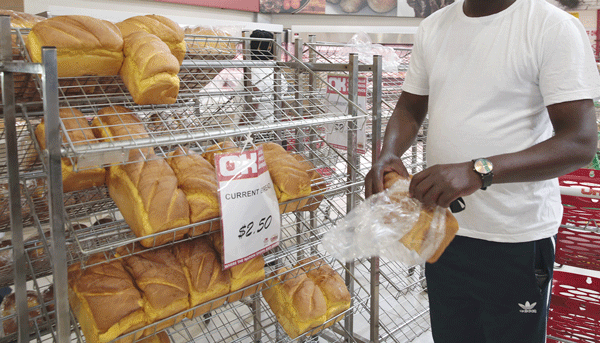Source: Zimbabweans eating less as economy deteriorates – NewsDay Zimbabwe May 6, 2019
BY TATIRA ZWINOIRA
THE widening gap between prices of food and stagnant wages has led to 44% of poor households in the urban areas spending more of their incomes on food, from 16% in 2016, a USAID official has said.
Speaking at a public discussion forum on the economic decline and food insecurity crisis in Zimbabwe held in Washington DC, US, last Wednesday, USAID chief office of humanitarian assistance and resilience in Zimbabwe, Jason Taylor said more urbanites were now spending more on food.
“We have experienced in Zimbabwe a steady macroeconomic deterioration for a period of years and things are now just starting to bite. This deterioration is categorised most recently by
price spikes, which immediately followed fiscal and monetary policies implemented by the government last October. We have seen price increases for imported goods that are exacerbated by the falling value of the local currency,” Taylor said.“Inflation is now at 66,8% as of March. This is the official rate and this is up from 59,4% in February, a significant increase in one month. Informal estimates are much higher, so no matter how you are looking at it, it is not a good picture. This inflation impact is severe for ordinary Zimbabweans who have seen prices rise, but wages are not keeping up.
“Even if wages are rising, they are not competing with the prices that we are seeing… So, in 2016, the average poor household in urban areas spent 28% of their income on food. In 2018, that had risen to 44%. Let me let that sink in a bit. Twenty eight percent to 44%, that is a startling increase, and yet household dietary diversity is worse. So, put bluntly, people are spending more on food, but they are eating worse.”
This comes as prices of basic commodities continue to go up due to the falling RTGS dollar that was officially adopted back in February, but with no adequate backing, in terms of foreign currency or gold reserves.
As a result, the forex interbank platform, also set up in February and meant at attracting US dollar sellers, has spooked them, resulting in more US dollar buyers.
In the face of scarce foreign currency on the formal market, businesses are turning to the parallel market to source it to import critical raw materials.
And, as foreign currency on the parallel market comes with a high premium (now RTGS$5,2:US$1) businesses are including those costs in the pricing of goods to recoup the expense.
As a result, any changes to the parallel market forex rates result in higher prices of basic goods and services or in this case, food.
Some of the food items that have been buffeted by high price hikes include bread up (288%), cooking oil (130%), meat (100%), milk (140%) and maize (70%) compared to last year over the same period.
“We heard how bread and other staple prices are increasing very quickly. The price of maize is about 70% higher than what it was last year and about 80% higher than what it was on a five-year average and the price of cooking oil is 130% above average and these are the key staple foods for poor rural households in Zimbabwe,” said FEWSNET acting deputy chief of party Peter Thomas.
FEWSNET, is a leading provider of information and analysis on food insecurity agency and is part of USAID.
“In the face of high prices for households to purchase their basic food needs, not only are they limiting their dietary diversity, but they are also restricting their meal sizes, turning to other coping strategies, reducing the consumption of adults to protect the consumption of children,” Thomas said.

COMMENTS
With all these facts we still re-appoint our beloved reserve bank governor!! With all due respect, if one fails to solve a problem in FIVE years odds are they will not succeed given another 50 years! RGM demonstrated that very well. All they will give are excuses and more excuses.